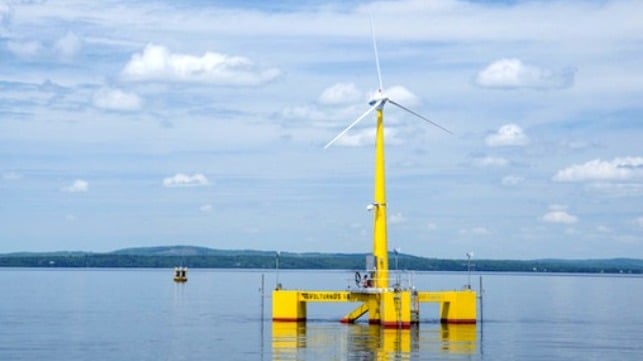Trump Administration Suspends Funding for UMaine Floating Wind Research

In its latest move against the offshore wind energy sector, the Trump administration suspended funding for a research project developing prototypes for floating offshore wind turbines. The move came days after the research project being undertaken by the University of Maine launched the base for its test system which was due to begin operations this summer.
In a letter released online by Maine State Representative Reagan Paul, the U.S. Department of Energy’s Advanced Research Projects Agency (ARPA-E) accuses the university of “failure to comply with one or more of the National Policy Assurances” in its ongoing grants. It is informed that ARPA-E “is suspending all activity” effective this date (April 11) for a period of up to 90 days. The suspension could be canceled or extended by ARPA-E and the university has the right to object and provide information and documentation challenging this suspension.
A university spokesperson told the media in Maine they had not been aware of any issues or investigations. It is being pointed out that the letter does not make specific allegations of the nature of failures or violations of rules.
The state of Maine and the Trump administration have been feuding since February. State Governor Janet Mills openly rejected Trump policies including on transgender rights during a White House event. The governor cited state law to which Donald Trump said “You better comply,” and later “See you in court.” Maine Public Radio is saying that two other grants were also suspended and that the university has had several pools of federal aid suspended, cut, and reinstated since February.
The university’s Advanced Structures and Composites Center has been leading the research into floating offshore wind turbines for more than a decade and in 2024 won grants which are reportedly valued at $12.5 million. The project was to build and test a prototype in the Gulf of Maine.
The researchers successfully floated a 375-ton concrete base on March 30 as the first step in the prototype project. The base was towed to Searsport, Maine where it was docked. The work called for the installation of the tower, turbines, and blades in the coming week. The prototype is a 56-foot square base that stands 32 feet high. It is a quarter-size research prototype for the tests.
By the end of May, the prototype was to be towed into position in Penobscot Bay near Castine, Maine. It was scheduled to undergo 18 months of testing and data collection from more than 200 sensors.
Maine proposed a research site for floating offshore wind in 2021 and won approval from the Bureau of Offshore Energy Management (BOEM) in 2023. A research lease was awarded in August 2024 for a project that ultimately proposes to place up to 12 floating turbines that would have a capacity based on current designs for up to 144 MW of electricity.
